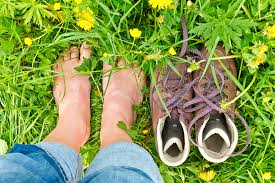With spring time upon us, it’s a good time to get out into the garden and enjoy the warmer weather and the therapeutic benefits of gardening. However, while most people enjoy gardening there are a large number of people who experience aches and pains in the back area afterwards. In this article we will explore a couple of simple things that you can do too reduce your likelihood of post-gardening back pain.
The most common reasons that people experience back pain after gardening are due to the time they spend in the same position, and their equipment biases. While there is much debate about what an ideal posture is, what we do know is that the more time we spend in the one posture, the more likely we are to experience discomfort.
Most gardening activities involve bending forward and what we call “flexing’ the spine. Whether it be weeding the garden, potting a plant or even raking up leaves, the body is stooping forward to some extent. This position in itself is not a bad thing, however there is such a thing as too much of a good thing! It is all too easy to get carried away only to realise that you have stayed in the same position for over an hour.
The good news is that the solution is fairly simple – take regular position breaks. Every 30 minutes you should stand up completely and gently arch your back a few times in a comfortable range. If you find that this is not comfortable to do, then even taking a short walk for 5-10 minutes can help to break up the time you have accumulated in the same position.
The other common reason that people experience discomfort after gardening is due to their biases. When we have to carry a bucket or a watering can, most people instinctively choose the same arm to carry it with every time. The same happens when we rake, sweep or shovel. There is one side that usually feels more natural to use and hence we choose to use this side most if not all of the time.
When we carry something, or sweep to one side only, we put more load through one side of the trunk muscles. Again, this in itself is not usually a bad thing unless we always load the one side and neglect to load up the other side at all. As with all tissue in the body, the muscles can tolerate a certain amount of load before they begin to fatigue and we feel discomfort. Unfortunately this is usually after we realise that we have overloaded them!
Luckily again the solution is simple – well in theory anyway. The first step is recognising if you are biasing one side when you carry, shovel or sweep something. If you identify that you are biasing one side, try to change things up and use the other side. It may take longer to do and feel unnatural, however it will make sure that your body is better sharing the loads placed on it rather than concentrating the loads on one side of the trunk.
Of course another key part of looking after the body while gardening is making sure that you have the necessary strength, mobility and balance for the demands. If you don’t currently have a regular routine that you do, feel free to follow our Exercise Classes on Facebook or look at the exercise videos on our website.

